Its unique fusion of historical and modern attractions is at the core of Shanghai’s identity. The city never seems to lose its charm regardless of the kind of visit one would be making. The following guide will highlight places that are worth visiting in 2025. Marvel at the mesmerizing skyline, the rich heritage, and the tranquil Yu Yuan Garden; art lovers will surely be impressed by the cutting-edge art scene. We will incorporate every detail needed for you to make this trip unforgettable. So prepare to embrace the exploration of this exquisite city!
What Are the Top Shanghai Attractions to Visit?
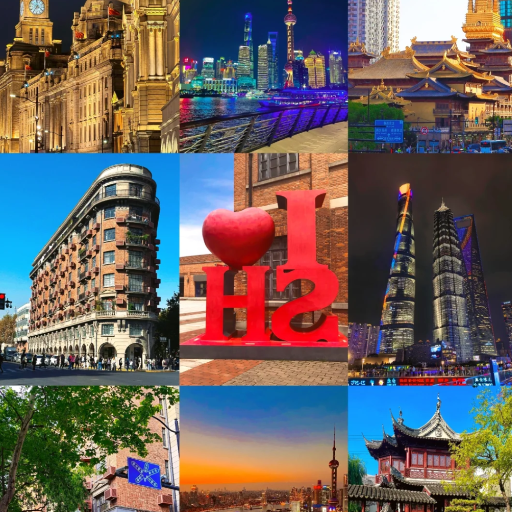
Why Is the Bund a Must-Visit?
Integrating both historical and cultural aspects of Shanghai, The Bund is a place that best represents the modern charm of the city, and it must be visited. Renowned for its beautiful waterfront and stunning buildings, the Bund is long on the west bank of the Huangpu River. Here, tourists can appreciate the iconic skyline marked by the Oriental Pearl Tower and Shanghai Tower. These modern structures greatly contrasted with the colonial buildings built on the promenade.
Cultural importance: It boasts the largest concentration (52) of preserved buildings from the early 20th century, including Gothic, Baroque, and Art Deco styles.
Natural beauty: It has a wide-angle view of the newly developed Pudong district and its modern-day skyscrapers.
Public transport: The strand is an end station for several important lines (e.g., East Nanjing Road Metro Station).
In any case, the Bund, whether approached from an angle of history, architecture, or stunning views, is something to approach for every way one wishes to visit Shanghai.
Exploring the Shanghai Tower: Facts and Highlights
The Shanghai Tower is China’s most striking cultural symbol and the country’s tallest building. It exemplifies modern innovations and sustainable designs. Here are some facts and highlights.
Height: The building is impressive at 632 meters (2,073 feet) and has 128 floors.
Design and Structure: It has a spiraling design that reduces wind resistance by up to 24%, maximizing efficiency and stability.
Observation Deck: The tower has one of the world’s tallest observation decks, offering an astonishing view of Shanghai’s skyline. It is 561 meters (1841 feet) high.
Elevators: The speed of the elevators in the city is among the highest in the world. They move at 20.5 meters per second or roughly 74 km/h.
Sustainability: The environment was kept in mind while designing the tower as it contains advanced insulation systems, double-layered glass façades, and systems for recycling rainwater.
Multi-functional Use: Besides being an office, the building comprises a luxurious retail area, cultural facilities, and a hotel, making it a bustling hub.
A masterpiece of contemporary engineering and a UNESCO Sustainability Award winner, the Shanghai Tower is a must-visit location for every person exploring the architectural marvels of Shanghai.
What Makes Yu Garden Special?
For its exquisite traditional Chinese architectural style combined with its classical landscape design and historical significance, Yu Garden, located in Shanghai, is worth a visit. A fusion of natural and human artistry, traditional gardening, and Yu Garden was constructed during the Ming Dynasty (1559−1577) and is one of the best examples of Ming gardening culture.
Architectural Features: The meticulously built rockeries, ponds, bridges, and pavilions in the Yu Garden demonstrate the gracious art of landscape gardening in Suzhou style.
Historical Significance: The Yu Garden, preserved for centuries, opens the door to ancient Chinese civilization and remarkably captivates tourists.
Cultural Significance: Yu Garden hosts deep traditional symbolism walls with dragons and other elements like carved decorations.
Physical Characteristics: The garden is divided into six tranquil areas, each distinctively arranged with an approximate radius of 20000 square meters.
Due to its historical and cultural value, Yu Garden is a historical place for citizens and foreign visitors.
How to Plan a Perfect Shanghai Tour?
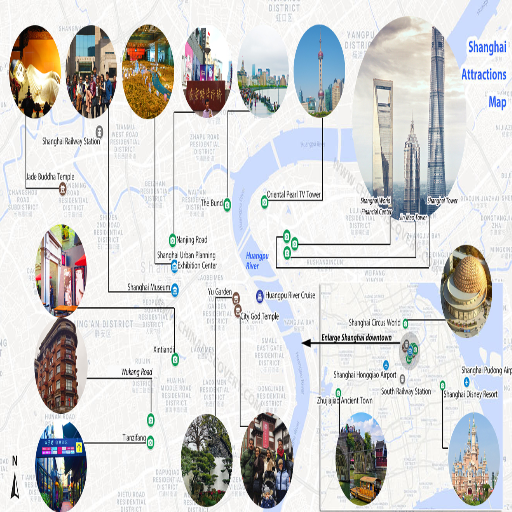
Essential Tips for a Smooth Visit in Shanghai
Prepare Your Details
Research your favorite sites, such as the Bund, Yu Garden, and the Oriental Pearl Tower.
Plan each meal and leisure activity with enough time to spare, considering traveling durations, especially rush hours.
Try to combine sightseeing with other attractions that are within close range.
Modes of Travel
Metro: Shanghai Metro is one of the most popular transport systems in the city. Use the Shanghai Public Transport Card to make travel cheaper and more manageable.
Taxis: Frequently offered, but make sure the meter is switched on. DiDi taxi application is reasonably practical as well.
Walk and Cycle: The best forms of mobility in neighborhoods on the French Concession’s outskirts.
Ideal Visiting Circumstances
Spring (March- May) and autumn (September – November) are the best because they have warm temperatures and less rainfall.
Avoid all major public holidays, especially Golden Week (October 1-7), because of the crowds and the money involved.
Money and Expenses
The Renminbi (RMB) is the local currency, though small notes are best saved for street merchants and taxis.
Most shops accept mobile transactions like Alipay and WeChat Pay, but international debit and credit cards don’t always work.
Interactions With The Public
Follow local etiquette, including, but not limited to, using titles when addressing someone, and do not overstep in formal contexts.
While visiting temples and other historical sites, you should wear modest clothing.
Useful Phrases
A few words in Mandarin might help, but English is accepted for most popular tourist places.
For seamless conversations with the locals, download a translation app.
Following these recommendations will guarantee an enjoyable and hassle-free visit to Shanghai!
Choosing the Best Time to Visit Shanghai
The optimal period for visiting Shanghai depends on the activities you wish to undertake and the weather you wish to experience. This city has four seasons, each with its unique flavor:
Spring (March to May):
Weather: Mild, light rains and temperatures ranging between (10 to 21 Degrees)
Highlights: Blooming an eventful outdoor flourish allows Yu Garden and Century Park to showcase their gardens.
Autumn (September to November):
Weather: Comfortable and dry, ranging from 15 degrees to 24 Degrees.
Highlights: Ideal temperatures for sightseeing due to the clear sky and vibrant foliage.
Summer (June to August):
Weather: Fierce and moderately hot with temperatures between 25 to 35 Degrees.
Highlights: Typhoons are common, but singles are ready for hot festivals. The weather has plenty of crowded activities with high humidity.
Winter (December to February):
Weather: Bearing cold with temperatures ranging between 2 and 10 degrees Celsius.
Highlights: Although outside activities are slow during the festive Christmas period, the city is beautiful with blinking decorations and snow.
To have the best experience with beautiful views, spring and autumn are the most amazing months to visit Shanghai.
Understanding the Area of Shanghai for Better Exploration
Each area in Shanghai has its attractions and experiences. Familiarizing oneself with the divisions will help understand the areas better for exploration:
The Bund (Huangpu District): This area is renowned for its historical buildings and beautiful views of the Pudong skyline. It is fantastic for sightseeing, photography, and taking walks.
Pudong (Lujiazui): This is represented by skyscrapers and other modern attractions that symbolize contemporary Shanghai.
French Concession: This is an appealing region with European-style cafes and boutique stores along streets shaded by trees.
Old Town (Nanshi): The center of culture in Shanghai, where one can find antique buildings from the Chinese era.
Xujiahui and Beyond: Contains some modern-day shopping centers and old historical structures.
These areas should be explored for greater efficiency according to personal interests, cultural history, modern architecture, or lifestyle. Traveling by public transport, especially the metro, is the quickest and cheapest method of moving between districts.
What Are the Best Shanghai Attractions for Families?
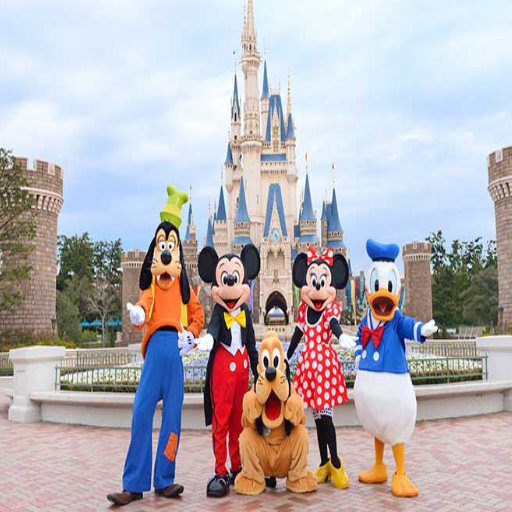
Is Shanghai Disneyland Worth the Visit?
Shanghai Disneyland is worth visiting, especially for families with little kids or die-hard fans of Disney. It’s the biggest Disneyland park in Asia, boasting the most advanced roller coasters, such as Tron Lightcycle Power Run and Pirates of the Caribbean- Battle for the Sunken Treasure, which integrates sophisticated storytelling alongside modern technological wonder. Not to mention that the park’s Enchanted Storybook Castle is the biggest Disney castle in the world, which makes it an awe-inspiring experience.
Considerable factors for this particular park include the pricing of tickets, which vary from CNY 399-699 according to the season, and the time of operation, usually 9 AM – 9 PM. Disneyland is enormous; therefore, it is recommended that you plan for a whole day to experience all the famous attractions and shows. For greater enjoyment of the experience, visiting during the week or purchasing the Disney Premier Access can ease waiting time. The park is also conveniently located on Metro Line 11.
Discovering the Shanghai Ocean Aquarium
The Shanghai Ocean Aquarium showcases Asia’s marine habitats in the most impressive light and is widely regarded as one of the finest aquariums on the continent due to its size.
Translations: ‘Tickets Whale Watching´ are priced between 160 CNY to 240 CNY for adults depending on age and package included, which means they are easily affordable to everyone.
Tourist Information Center: This aquarium is open every day from 6 to 9 p.m.; in peak seasons, it is open until 6 p.m.
Focal Areas: A seventeen-meter-long underwater tunnel at the Amazon Basin showcased with themed zones is the most popular highlight where viewers spend most of their time during the tour.
Directions: The aquarium is located directly opposite Lujiazui on Metro Line Two. The efficient municipal public transport network provides easy access to the rest of Shanghai.
Words for the Wise: Early mornings and weekdays are recommended for those who want to avoid large crowds. I advise younger families to buy the combo tickets to get the most out of the aquarium experience.
From any angle, the Shanghai Ocean Aquarium is an educational experience anyone of any age can benefit from.
Family-Friendly Activities at People’s Square
People’s Square in Shanghai is an excellent place for families to visit because it offers diverse activities. Here are some highlights for the family:
Shanghai Museum: This can be considered the pride of every civilized country, and the interactive sections like ancient historical sites and cultural activities always amaze visitors. As a family, one can appreciate China’s wealth of history. The museum is known for its family-guided tour programs and the audio guides and workshops designed exclusively for children.
People’s Park is a peaceful park for families. Walking through the beautifully maintained park with trees and flowers is refreshing. The park has ample space for children to run around on safe and engaging equipment and have an enjoyable family picnic.
Shanghai Urban Planning Exhibition Center: This is best for older children and adults because younger children cannot appreciate such a detailed city model. However, some virtual reality and other activities exist for children younger than school age. The exhibits let children learn about city planning sponsored by the setting.
Accessibility: Metro Lines 1, 2, and 8 can reach it. Children can enjoy the variety of open spaces, ramps, and rest areas provided. The seats for nap times help families with prams or adults who may not be so mobile.
Combining it all creates a delightful mix of recreation, learning, and ease of access, making People’s Square a destination for families who want positive experiences in Shanghai.
How to Experience the Modern Side of Shanghai?
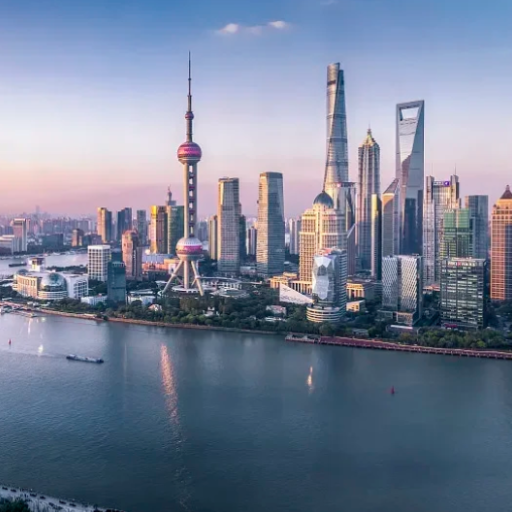
Unmissable Views from the Shanghai World Financial Center
Regarding Shanghai’s skyline, no view can surpass that of the Shanghai World Financial Center (SWFC). At a staggering 492 meters tall, it is one of the tallest buildings in Shanghai and contains three observation decks, which allow visitors to view the city from various angles. Its supremest point, the 100th floor, includes a Sky Walk with a glass-floor viewing area, providing a thrilling view of the city underfoot.
Height: 492 meters, making it one of the tallest structures in Shanghai.
Observation Decks:
94th Floor (423 meters): This deck features a spacious viewing area and a café, where visitors can sit back and enjoy the breathtaking skyline of Shanghai.
97th Floor (439 meters): This floor consists of a bridge view deck, from which visitors can see Shanghai’s skyline and another adjacent city.
100th Floor Sky Walk (474 meters): This deck is decorated with a breathtaking glass skywalk, which provides a view of the shaking skyline from an exhilarating angle.
The building’s swift elevators allow visitors to reach its observation deck easily. Located in the heart of Shanghai, Metro Line 2 allows users to quickly reach the Lujiazui station and walk the rest of the distance. Hence, this iconic skyscraper has become a significant highlight for tourists willing to experience the modern side of Shanghai.
Exploring Lujiazui: The Heart of Shanghai’s Skyscrapers
Well-known as the center of financial and commercial activities, Lujiazui in Shanghai has firmly etched its name on the global map and history. The district has two of the tallest skyscrapers in the world, The Shanghai Tower (632 M) and The Shanghai World Financial Center (492 M). These not only showcase majestic architectural construction but also serve as a reminder of Shanghai’s economic growth and urban expansion.
Along with the existing skyscrapers, the area is fully equipped with cutting-edge technologies, such as highly efficient sustainability systems and ultra-high-speed elevators. It is further complemented by stunning parks and specially designed pedestrian sidewalks, which add to the mesmerizing views. Moreover, Shanghai Metro Line 2 offers functionally improved access to the city’s central areas, so tourists are bound to enjoy its view. With all these factors combined, Lujiazui provides a stunning view for urbanistic architectural observers.
Nightlife and Entertainment in Shanghai City
Shanghai’s nightlife is exhilarating, combining traditional culture and modern vibrancy. Stunning picturesque skyline views, historic buildings, and magical nighttime promenades await visitors at The Bund. Found 158 and Xintiandi are ideal spots renowned for upmarket lounges, international cuisines, vibrant clubs, and a lively bar and club scene.
Xiang Opera, jazz, local delicacies, and live performances in noteworthy public spaces like teahouses offer cultural enthusiasts something to enjoy as they unwind. Riverside promenades and rooftop bars are perfect for relaxed evenings due to their astonishing views of the city’s lights, great service, and creative drink menus.
Shanghai boasts an impressive entertainment scene combining culture, luxury, and accessibility. This metro network, alongside Metro Line 2 and Line 10, allows for easy access to the nightlife hubs, no matter the hour.
What Are the Cultural Highlights of Shanghai?
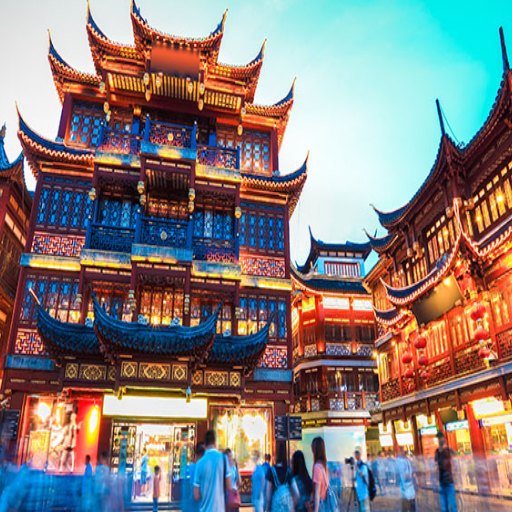
The Importance of the Shanghai Museum
I think a trip to Shanghai would be incomplete without visiting the city’s most prominent cultural icon: the Shanghai Museum. Its importance stems from its encompassing China’s complex history and art. It contains more than 120,000 historical artifacts from ancient China, including bronzes, ceramic items, calligraphy, and traditional paintings. This variety underlines the breadth of Chinese cultural heritage.
The museum is equipped with modern climate control systems to enhance the longevity of its delicate items. Its layout is also methodical, with cohesive theme sections and bright illuminations that improve the visitor experience. To meet the 21st-century audience, audio guides, tablets, and other interactive devices are available, transforming the museum from a storage house of history to an innovative learning institution. By fulfilling all these expectations, the Shanghai Museum becomes an icon blending culture and innovation.
Visiting the Historic Jing’an Temple
The intertwining of design with spirituality at Jing’an Temple is breathtaking, making it an architectural wonder that embodies China’s history and a landmark that marks its religion. The temple’s intricate design, which comprises traditional Chinese features alongside contemporary renovations, took my breath away. The quiet ambiance of the temple brought a sense of peace amidst the chaos of the city, which granted me time for self-contemplation.
Specific modern touches to ancient features, like the wooden structures and modern climate control systems to guard the century-old artifacts within, clearly demonstrated how dynasty is preserved alongside modern infrastructure and how the preservation efforts of climate control and subtle revealing circuits made the stunning temple even more beautiful. These features also improve the visitors’ experience, enabling the temple to communicate its history for future generations.
Exploring Tianzifang: A Cultural Gem
The fusion of architecture, modern art, and history that Tianzifang offered me was breathtaking in every sense of the word. The narrow alleyways are stuffed with vibrant shops and street art, reflecting local designers and artisans’ creativity. It is marvelous to see traditional Shikumen buildings transformed into modern places of creativity, like designer boutiques and cafes.
Tianzifang is also an outstanding showcase for modern urban art and a hub for craftsmen and designers. It is easy to see that these new cafes and boutiques built within the preserved Shikumen-style buildings are pretty remarkable. They have been delicately renovated into beautiful artsy stores without any structural modifications to these historic houses. These houses are visually stunning and can hold and maintain their landmark beauty while modern purposes are being served. However, such swift changes and popularity can tarnish a location’s cultural identity. Tianzifang, being famous with tourists, is affixed by regulated construction zones that emphasize sustainability and preserve the essence of the culture around.
Frequently Asked Questions (FAQs)
Q: What places in Shanghai should a first-time visitor see?
A: Visiting The Bund promenade for views of the skyline, Yu Garden (Yuyuan) for classical architecture, Nanjing Road for shopping, and the oriental pearl tower in Pudong for city view are some of the places a first-time visitor ought to see. A cruise on the Huangpu River is also recommended, as it’s a unique way to view the city.
Q: Is Zhujiajiao Ancient Water Town worth the trip?
A: Zhujiajiao Water Town is an ancient town under ‘Venice of Shanghai.’ Picturesque canals, stone bridges, and preserved Ming and Qing dynasty architecture offer a glimpse of traditional Chinese water town life. These attributes, juxtaposed with modern Shanghai, make for a beautiful day trip location, making it a recommended spot for many.
Q: What is the tallest building in Shanghai that tourists can visit?
A: The Shanghai Tower, located in the Pudong district, is the second-tallest building in the world and the tallest in China. A high-speed elevator takes tourists to the 118th-floor observation deck, where they can enjoy a breathtaking view of the city skyline and beyond.
Q: Why is the Bund significant in Shanghai?
A: The Bund is one of Shanghai’s most visited sites, its primary iconic spot, and a place of tourist interest. The promenade facing the Huangpu River offers marvelous views of colonial Shanghai buildings from one side, while Pudong’s impressive skyline dominates the other. This is perhaps the most convenient place in Shanghai to walk around, enjoy a scenic view, and capture the city’s unrivaled blend of the ancient and the modern.
Q: Which museums or science centers in Shanghai can someone visit?
A: Shanghai has many interesting midpoints, including museums and science centers. One of the most famous is the Shanghai Science and Technology Museum, which offers unique hands-on demos for children. The M50 Contemporary Art Gallery and China Art Museum are essential for those who appreciate fine arts. Historians should not forget to visit the Shanghai Museum, which has a fantastic collection of antique Chinese memorabilia.
Q: What local dishes are most popular in Shanghai?
A: Shanghai cuisine is marked by a very light taste, particularly regarding seafood. It must include xiaolongbao (soup dumplings), shengjianbao (fried buns stuffed with pork), Zhongshan rou (braised pork), and hairy crab (when in season). All these variants can be purchased in numerous restaurants in numerous locations within the city, from vendor kiosks to luxurious franchisees.
Q: Can modern Shanghai offer an authentic traditional Chinese cultural experience?
A: Sure! Even with its contemporary structure, Shanghai allows visitors to engage with traditional Chinese culture. The Jade Buddha Temple and Longhua Temple are frequent sites for Buddhist traditions. The classical Yuyuan Garden and the Old City are known for their traditional architecture. Viewers can enjoy traditional Chinese operas, visit teahouses, and experience tea ceremonies first-hand.
Q: How else can one enjoy the breathtaking skyline of Shanghai apart from the popular observation decks?
A: Apart from the standard observation decks, many creative ways exist to appreciate Shanghai’s skyline. The Huangpu River offers night cruises where passengers can bask in the wonder of the skillfully illuminated buildings. One is bound to spot various rooftop bars in Pudong and Puxi, where one can enjoy cocktails and enjoy the view. The Bund Sightseeing Tunnel sets itself apart as a therapeutic journey beneath the ground and between the substations of the Bund and Pudong.